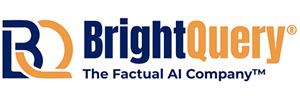Entity Centric Learning vs. Record Matching Methods in Entity Resolution Systems
Most entity resolution algorithms rely on record matching – a method whereby each record is compared to other records for similarity. Record matching does not learn which ultimately results in missed matches.
More advanced entity resolution uses Entity Centric Learning™ – a method that treats resolved records as a single holistic entity. Entity Centric Learning gets smarter over time, improves accuracy, and can detect non-obvious relationships that humans can easily miss.
Record Matching
Can you match the record on the left to any of the records on the right?
Nope. Record 1 shares only a name with Sue Jones, Record 2 only an address, and Record 3 only a phone. No single record contains enough information to match.
As a result, record matching systems will incorrectly create a new entity for Sue Jones (Record 4):
Record matching works well when every record is rich with features, has reasonable data quality, and no one is trying to evade detection. But the moment some records don’t have many features, the data quality is poor, or the data contains intentionally fabricated lies, record matching misses good matches (aka creates false negatives).
Entity Centric Learning
When entity resolution uses the Entity Centric Learning method, Record 4 is compared to “everything we know about Sue” (all the features across all the records) – resulting in a more accurate outcome:
Entity Centric Learning is especially important as dozens of attributes, if not a hundred, can be used to describe an entity (from name and address to Twitter and Instagram handles). These attributes are scattered and disconnected across countless data sources. Entity Centric Learning builds holistic entity views which retains all information known about an entity. Over time and with more data, Entity Centric Learning improves the accuracy of entity resolution.
Furthermore, when it comes to catching fraudsters or other bad actors, Entity Centric Learning is mandatory. This is because bad actors never use the same name, date of birth, address and/or passport number every time they submit a credit card application or apply for a loan. Only the idiots would do that! Clever bad actors do their best to prevent organizations from figuring out who is who. For more about this read: Channel Separation: The Primary Tradecraft of Clever Bad Guys.
[If you would like to get your hands on synthetic data which includes Entity Centric Learning examples, download the Senzing Synthetic Truth Set.]
Other Resources



